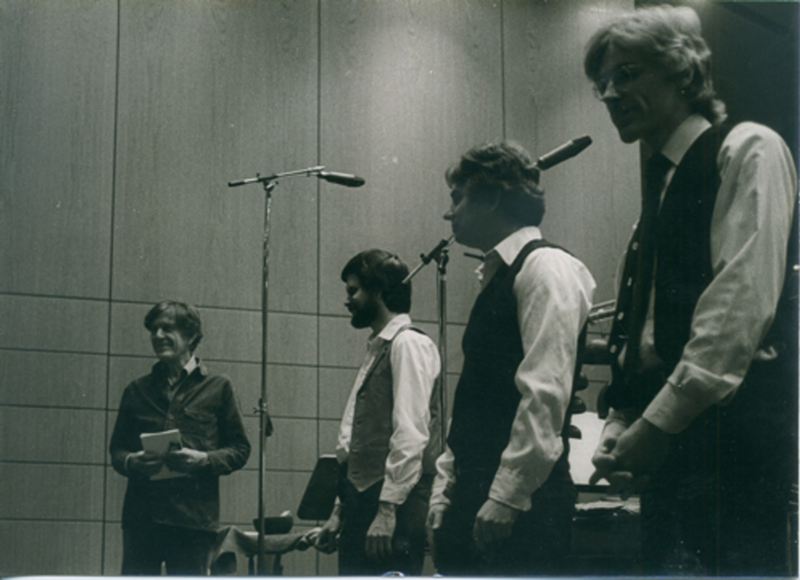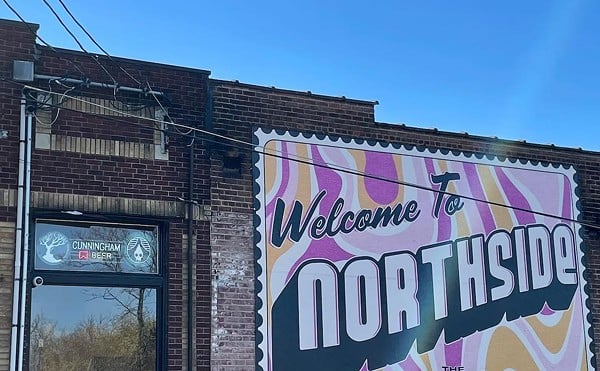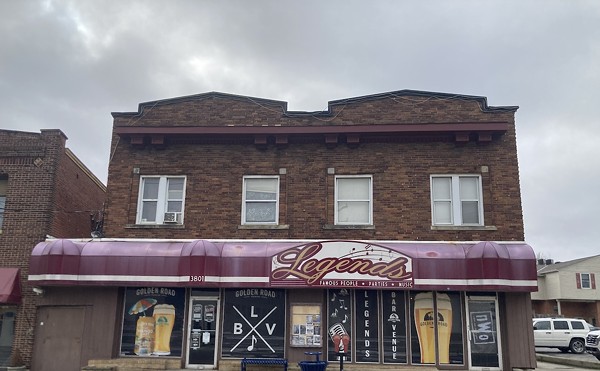Like arts institutions all over the world, University of Cincinnati’s College-Conservatory of Music is celebrating this year’s John Cage Centennial. A concert featuring work of the visionary 20th century American composer occurs at 8 p.m. Thursday, with the CCM Philharmonia joining Percussion Group Cincinnati for American Voices XV – Celebrating John Cage at 100.
CCM’s concert is special for Cage enthusiasts. Percussion Group Cincinnati — a CCM ensemble-in-residence for 30-plus years — not only knew Cage (who died in 1992 at age 79), but he wrote the piece they will perform Thursday, “Music for Three,” just for them back in 1984. The piece is written for three percussionists and 150 (!) instruments of their choice.
The trio — faculty members Allen Otte, James Culley and Russell Burge — will play the piece simultaneously with the Philharmonia’s interpretation of an orchestral piece, “Renga,” that Cage wrote for the U.S. Bicentennial. “Renga” is highly unusual; its score is a series of drawings by Henry David Thoreau, which orchestra members are free to interpret as the conductor monitors time. CCM faculty members will join students for its performance.
Cage fearlessly explored how any sound could make for beautiful “music.” This included silence — Cage’s most famous composition, “4.33,” connotes the duration of minutes and seconds during which an orchestra or musician makes no sounds.
With its 150 percussion instruments, “Music for Three” would seem a kind of anti-“4.33.” Yet it is not chaotic.
“In his crazy-sense-of-humor Zen way, each of us has 50 instruments and some get played heavily, but a couple don’t get played at all,” Otte says. “So do we really need to bring them out? I think the answer is ‘Yes.’
“The music itself is as soft as possible, as loud as possible, as fast, slow, virtuosic and simple as possible — all that happens unpredictably in this half hour (of music),” Otte continues. “So I thought we should have the most beautiful expensive Japanese gong, the most common orchestral snare drum and we should have pieces of junk. I’ve had a bicycle wheel and a paint can sitting right next to the gong, or something the workmen left laying in my yard the last time they were out there.”
Cincinnati ha
s long been a hotbed of support for Cage’s progressive artistic ideas. He served as an artist-in-residence at CCM in 1968 and at that time met the gallerist Carl Solway, who encouraged him to make visual art. A CCM faculty member, Jeanne Kirstein, became known as one of the nation’s top performers of Cage’s prepared-piano and piano compositions. And a UC philosophy professor, Van Meter Ames, had extensive correspondence with Cage on Zen.
Percussion Group Cincinnati’s members came to CCM in 1979 through contacts with the LaSalle (String) Quartet, an ensemble-in-residence whose wide repertoire included an early recording of Cage’s 1950 “String Quartet in Four Parts.” Through LaSalle’s connections, Percussion Group Cincinnati began playing overseas festivals. In the early 1980s, they played one in Cologne where Cage was the guest composer. So they prepared some Cage compositions and got to know him.
“One year later, he had another similar week in Italy and called up and said, ‘That was fun, let’s do this again,’ ” Otte says. That is where “Music for Three” came about.
“It was in his little hotel room, where he invited me for dinner and lunch,” Otte recalls. “He would travel with a wicker picnic basket full of his own organic peanut butter and bread he made himself. It was heavy and wet as a meatloaf. He was talking with such enthusiasm about this new idea. He had just made a new piece with a computer and there was one percussion part and it was going to be for 50 different instruments. Every percussion player could choose his own.”
Back in Cincinnati, another composer backed out of writing a concerto for PGC for an upcoming festival. So Otte called Cage and asked if he could alter his idea and come up with three percussion parts for 150 instruments. Cage agreed. “Music for Three” was born and Cage also agreed an orchestra could play “Renga” at the same time.
“We played it in Ann Arbor and he came out for the premiere,” Otte says. “It’s a half hour of music, it’s hard, it’s unusual. We’ve played the percussion parts separately by ourselves a number of times, but this is only the second time we’ve ever actually done it with an orchestra.”
For tickets ($12/free for students) to the 8 p.m. AMERICAN VOICES XV – CELEBRATING JOHN CAGE AT 100 concert at UC’s Corbett Auditorium Thursday, click here.






